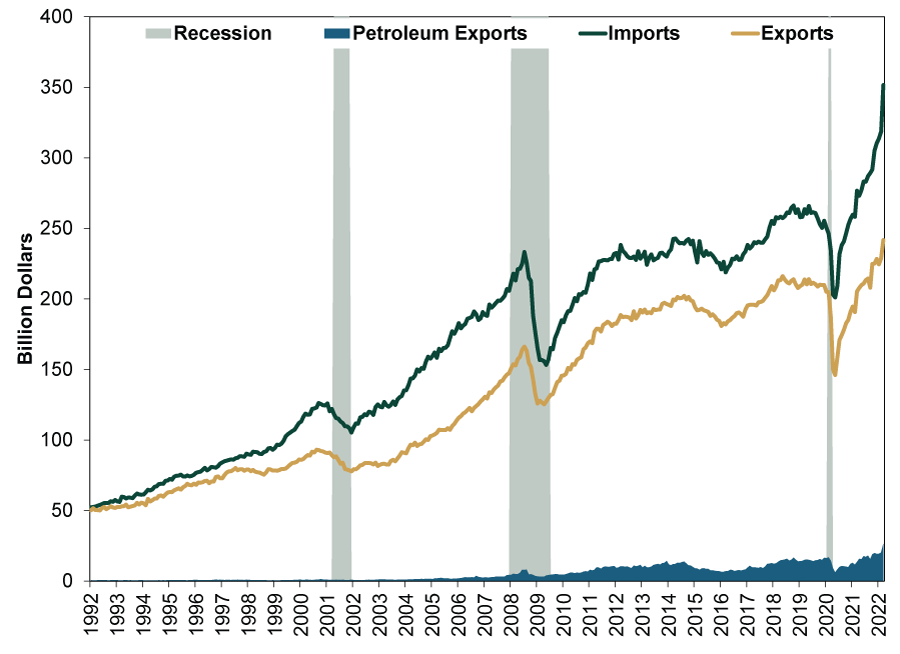Personal Wealth Management / Economics
Keeping Tabs on the Latest Economic Data
Amid unsettling volatility, what do developed-world data say?
A bevy of economic data came out recently—to a fairly consistent negative reception. But in our view, sour sentiment tied to the ongoing correction is causing many investors to underrate economic conditions today. Here are the major releases from the developed world that hit the wires last week and our thoughts on what they signal.
One item gaining many headlines: US productivity, which suffered its biggest fall in 75 years. While that perhaps sounds alarming, it is just a twist on Q1’s GDP report, and the -7.5% annualized decline was simply a function of math.[i] Productivity, as the US Bureau of Labor Statistics defines it, is output per hour. Take it apart, looking at the denominator first. Workers’ hours rose at a 5.5% annualized rate last quarter, suggesting growth created more work and jobs.
Meanwhile, output—as measured in this data series by GDP excluding government, nonprofit and household sectors (i.e., private sector business production)—fell -2.4% annualized.[ii] But as we detailed earlier, private sector inventories mainly drove Q1 GDP down. The inventory drawdown came after massive stockpiling in Q4 to counteract supply chain problems. Stripping out inventories, business spending and investment rose 9.2% annualized in Q1, a historically strong rate. Bigger picture, productivity measures are backward-looking, and they normally fluctuate during an expansion.
Headlines last week were also abuzz over the US’s record trade deficit. But we don’t think this was very meaningful for investors, either—not least because it reflected late-lagging March data, already embedded in Q1 GDP. Moreover, while “deficit” implies something wrong—and that belief is widespread—imports exceeding exports isn’t inherently bad. Imports reflect consumer demand. Trade data showing they hit record highs is good! (Exhibit 1) Even better, exports hit a record, too! Judging by this measure, global trade is hardly in retreat. Some might say, yah but record amounts of trade just reflect sky-high prices—it is only inflation. But using quarterly GDP data, which is inflation-adjusted, US trade still hit new highs in Q1. Notably, US petroleum exports also hit new highs. Worries about whether America’s oil industry will respond to high global prices abound—and in our view, this is one sign among many those concerns aren’t warranted.
Exhibit 1: US Trade Is Booming
Source: Federal Reserve Bank of St. Louis and Census Bureau, as of 5/4/2022.
As you can see, American imports have exceeded exports for the series’ entire history. We habitually run trade deficits, so that isn’t a relevant feature, in our view. More interesting, to us: The trade deficit is normally wide when the economy expands. Very often, the deficit shrinks when the economy is in recession, like 2008. So while the data are backward-looking, the record-high deficit today seems less like a sign of trouble and more like evidence the economy was growing at Q1’s close.
Looking abroad, the latest eurozone economic releases provide a glimpse at how inflation and the war in Ukraine are affecting data, as March reports reflect the first full month since the invasion. Real eurozone retail sales fell -0.4% m/m in March, led lower by a -2.9% drop in automotive fuel.[iii] These data mostly just add detail to the currency bloc’s Q1 GDP slowdown.
Meanwhile, March German and French industrial production (IP) fell -3.9% m/m and -0.5%, respectively.[iv] An -11.2% m/m decline in vehicle production led Germany’s drop as component shortages weighed. A similar circumstance struck in France, as motor vehicles slid -7.3% m/m. The situation should improve when China reopens and global supply chains adjust to the war’s impacting components usually sourced from Ukraine. The process won’t be frictionless, but it should see gradual improvement in due time.
Furthermore, data out on German factory orders and trade in March show continued weakness, as the former declined -4.7% m/m, again led lower by a -15.7% drop in vehicle production.[v] Manufacturing export orders fell -6.7% m/m with orders outside the eurozone down -13.2%. German trade data give some insight there. Germany’s overall exports declined -3.3% m/m in March, with sales to Russia plunging -62.3% as sanctions restricted trade. Exports to China, its biggest trading partner, fell -4.3% m/m amid Chinese lockdowns. While this isn’t great, obviously, these downswings are also largely one-offs—especially the drop in business to Russia, which greatly reduced Germany’s already small exports to the country. As for China, it may see continued negativity in the short term, but reopening should eventually boost exports as factories there resume sourcing German components.
For investors, stocks don’t need perfection. The bull market just needs reality to exceed current dour expectations. With so many expecting a lasting economic downturn, dour takes on mixed data suggest reality has a low bar to clear—a reason to remain bullish, in our view.
If you would like to contact the editors responsible for this article, please message MarketMinder directly.
*The content contained in this article represents only the opinions and viewpoints of the Fisher Investments editorial staff.
Get a weekly roundup of our market insights
Sign up for our weekly e-mail newsletter.

You Imagine Your Future. We Help You Get There.
Are you ready to start your journey to a better financial future?

Where Might the Market Go Next?
Confidently tackle the market’s ups and downs with independent research and analysis that tells you where we think stocks are headed—and why.






